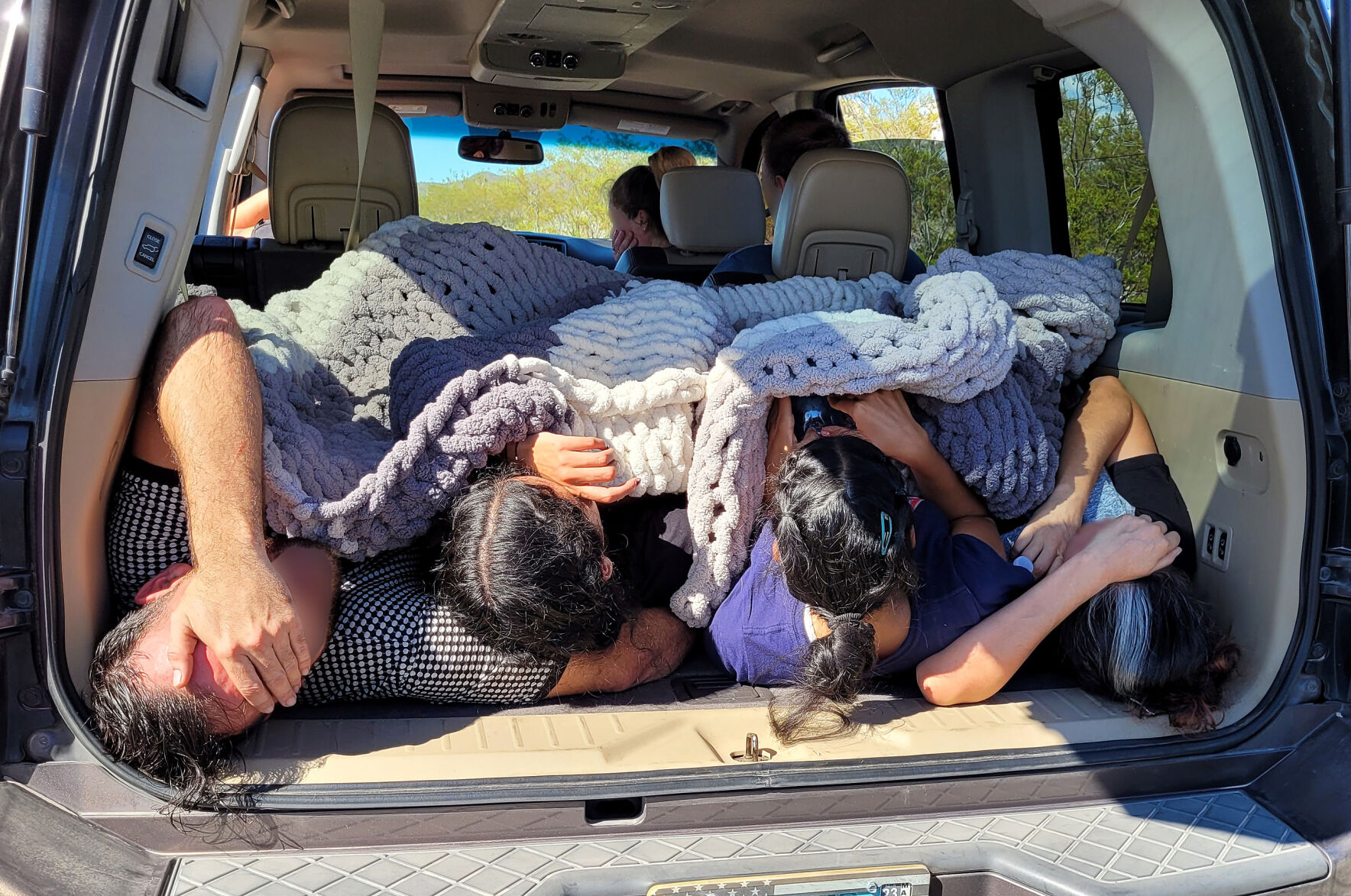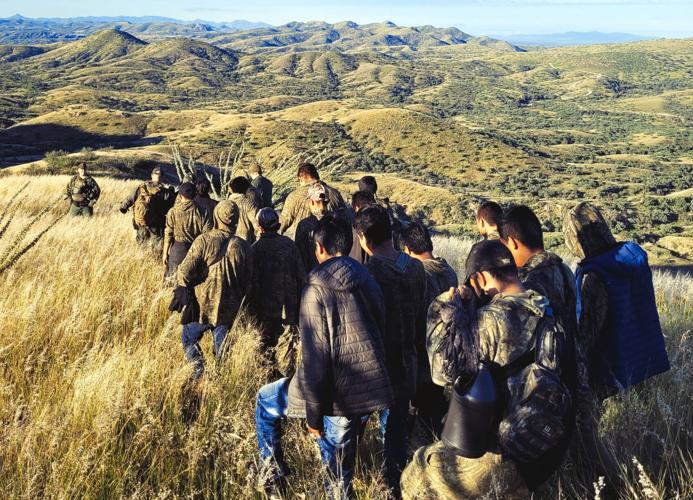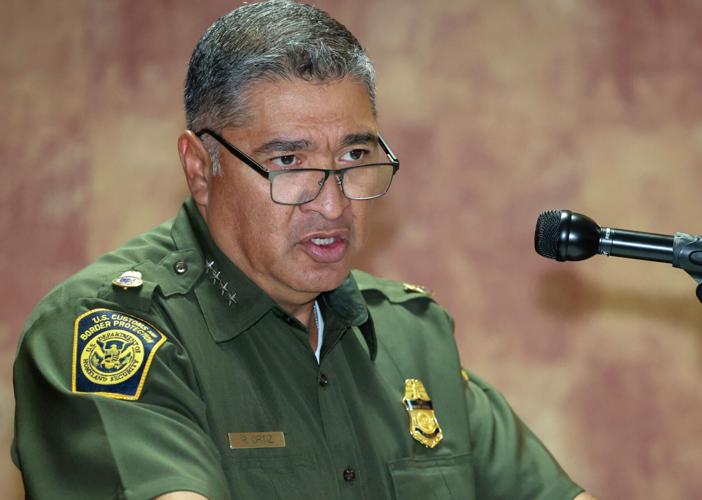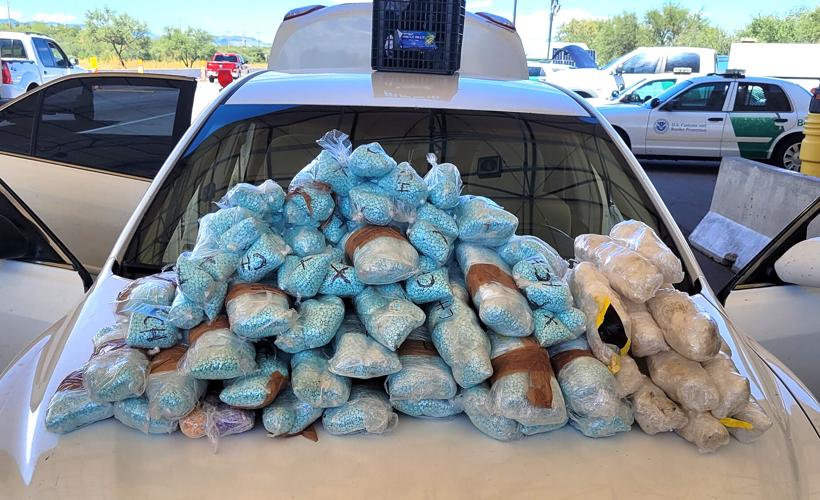National Border Patrol Chief Raul Ortiz says a big reason for the increase in apprehensions along the U.S.-Mexico border is growing political, civil and economic unrest in the Western Hemisphere and throughout the world.
The Border Patrol is encountering migrants from 160 different countries, he says.
With one month left in the fiscal year, the U.S. has seen a record number of apprehensions at its southern border in 2022, at nearly 2.5 million apprehensions — more than 500,000 of which were in Arizona.
In particular there are growing numbers of people coming from Cuba, Venezuela, Nicaragua and Colombia. The number of Border Patrol encounters with migrants who entered the country undocumented this fiscal year from Columbia increased by 1,373% over last year, from Cuba by 475%, from Venezuela by 293%, from Nicaragua by 238%.
“All of these countries are dealing with political, civil, economic unrest,” Ortiz told the Star in an interview on Sept. 23. “I think what has happened is social media has exposed this migrant population to information, and sometimes it’s false information, about an easy trek across the Southwest border. And that’s not necessarily the case.”
Another pull factor for migrants is that economic and health conditions caused by COVID are improving in the U.S. faster than in many countries, he said.
It used to be that a large portion of people migrating to the country were from Mexico and Central America, but that has been shifting in the last few years. This fiscal year, the number of migrants from farther than the Northern Triangle — Guatemala, Honduras and El Salvador — increased by 152%, while the numbers from Mexico, Guatemala, Honduras and El Salvador only increased by 1% from last year.

U.S. Border Patrol Chief Raul Ortiz, speaking in Tucson.
There is also an increase in migrants from countries as far away as Southeast Asia, as well as from Afghanistan and Russia, he said. The number of migrants coming undocumented from Russia tripled this fiscal year over last, and the number of migrants from Ukraine is nearly 10 times higher than last year.
“There are really two demographics that we’re dealing with,” Ortiz said. “This humanitarian aspect of the folks turning themselves in, in areas like Yuma, El Paso, Del Rio, South Texas. And then you have this other population that’s trying to evade apprehension, and those are strictly economic migrants. And that’s really what we see here in Tucson.”
In the Tucson Sector, which covers 262 border miles from New Mexico to Yuma County, the vast majority of migrants are from Mexico and the Northern Triangle and the majority are single adults. By contrast, in Yuma the majority are from countries farther away, and more are traveling in family units.
Expanding asylum process
One thing that would help the influx of migrants crossing between ports of entry would be an expanded asylum process, both at the border and in home countries or in a safe third country, Ortiz said.
Many migrants leave their countries on threat of death by criminal organizations, often after family members have already been killed, making the possibility of waiting in their home countries challenging or impossible.
But if there were a better way to process the migrants who come to the U.S. to seek asylum, then Border Patrol could focus more on border security issues.
“What we want to do is take that population out of the equation and focus on the fentanyl that is coming across the border, focus on the smuggled migrants that are coming across the border,” Ortiz said. “We’ve got methamphetamines still coming across. We have guns going back south, money going back south. There are criminals that are taking advantage of the fact that we’re so busy right now.”
Ortiz said he sees more cooperation than previously with other countries in the region to find solutions.

Nogales Station agents working the I-19 checkpoint in September, 2022, discovered the concealed narcotics following a K9 alert. More than 88 pounds of fentanyl and 20 pounds of methamphetamine were seized.
Hiring more agents, processors
As the number of people coming from varying countries grows, so do challenges in processing them, including language barriers, figuring out whether they have sponsors in the U.S., and whether there’s enough detention space or resources at local nonprofit organizations to assist migrants wishing to seek asylum, Ortiz said.
The Border Patrol has been working to hire not only more agents — 300 agents every year for the next four or five years to reach more than 21,000 — but also staff to specifically process migrants, a job that is often done by Border Patrol agents.
The agency currently has more than 400 processing coordinators and plans to increase that to 1,200 across the Southwest border by the end of next year and then to continue to grow that number, Ortiz said. The agency also has more contractors doing data entry, to allow more agents to be on patrol.
“That’s a better utilization of my workforce,” he said. “For these low-threat, or what I would consider vulnerable populations — families and unaccompanied children — that’s just data entry. They’re not a security risk.”
While the agency has had some hiring challenges, Ortiz is “cautiously optimistic” they’ll reach those recruitment and hiring goals.
Title 42 shrinking
Over the last six months or so the number of people being expelled from the country under Title 42, a public health policy put in place because of the pandemic, has been shrinking while the number of people being processed under U.S. immigration law has grown, Ortiz said.
Last fiscal year nearly 55% of migrants who entered the country undocumented were immediately expelled under Title 42. This fiscal year, it’s been 41%.
The reason for the shift is because the Border Patrol is getting more efficient at processing migrants at the border under immigration law and because of the types of migrants the agency is encountering, Ortiz said. The Border Patrol can only use Title 42 to expel migrants whom either Mexico or their home countries are willing to take.
The Biden administration tried to end Title 42 earlier this year, but a federal judge blocked it, leaving it unclear how long the public health policy will continue to impact migrants and immigration proceedings.
“I think for a lot of individuals and communities there was a sense of panic that if we lost Title 42, the border would be in total chaos. I don’t see that being the case,” Ortiz said.
He said that is because the agency has expanded processing facilities across the Southwest border, including more soft-sided facilities and centralized processing centers as well as more assistance with the processing coordinators, contractor and security personnel.
In some areas where there used to be 40% to 60% of agents processing, that’s down to 20%, with 80% of agents now out in the field. Also, they’re able to do more virtual processing due to newer technologies, increasing efficiency in processing migrants who come undocumented into the country, Ortiz said.

Ajo Station agents discovered five migrants hiding under a blanket in the back of an SUV in September, 2022.
Wall remediation
The government is planning remediation measures for border wall construction areas, which is getting ready to start this fall.
The plans include some environmental remediation as well as gap closure and gate installation, which is something environmental groups say will further impede the movement of wildlife.
The federal government has plans to close gaps in the wall in Yuma by the Morelos Dam. In the meantime, Arizona Gov. Doug Ducey’s administration closed many of those gaps with shipping crates, placing them on federal land without permission.
The border barrier slows people down, but people can still find ways around, Ortiz said.
Closing the gaps in Yuma doesn’t stop migrants from coming into the country, both because the southern side of that wall is on U.S. soil, meaning Border Patrol has to process people waiting there, and more people have been crossing nearby on the Cocopah Reservation where there is no wall.
Nonetheless, closing those gaps is still helpful because it funnels more migrants away from dangerous areas where migrants might cross in canals and rivers, Ortiz said. But he said a wall along the entire border may not be the answer in more remote areas.
“Infrastructure is important, but infrastructure by itself is not the solution to border security,” he said. “You have to have the technology, and you have to have the personnel to respond.”
Conservationists are sounding the alarm that the wall blocks off larger mammals’ migratory patterns, which could have long-term effects.
A recent study by Sky Island Alliance and Wildlands Network showed that larger mammals are crossing the border in the San Bernardino National Wildlife Refuge through floodgates that are open during monsoon season. If the floodgates were open year round, it would give the animals a better opportunity to get used to using them, conservationists say.
Ortiz said wildlife passages are considered during the planning of border barrier infrastructure but the only wildlife passages that exist or are mentioned in wall remediation plans are small openings in the barrier, about the size of a sheet of paper. He would not say if leaving the floodgates open is a possibility.
“We want to work with our partners, whether it’s the tribal community, whether it’s non-government organizations out there,” Ortiz said. “You see areas along the border, the river environment, where it just doesn’t make sense to have the level of infrastructure that we have.”
Critical Incident Teams to disband on schedule
Critical Incident Teams, controversial Border Patrol teams that have investigated fellow agents’ use-of-force incidents, are out of commission by the end of September, Ortiz said, as stipulated by Customs and Border Protection Commissioner Chris Magnus, a former Tucson police chief.
These teams have investigated Border Patrol use of force in numerous high- profile cases, including the shooting death of 16-year-old Jose Antonio Elena Rodriguez in 2012 and the more recent 2021 Border Patrol incident where Marisol García Alcántara was shot in the head in Nogales.
Critics of the teams include members of Congress. The teams have no authority to conduct investigations into agent conduct, lack transparency, go without a third-party investigation and have interfered with proper investigations, critics say.
Those types of investigations will now be under the purview of the agency’s Office of Professional Responsibility, but Border Patrol will continue to do evidence collection to support those investigations, Ortiz said. And some of the agents that were in the incident teams may move to the Office of Professional Responsibility to do those investigations.
“There’ll be a transition period where we will continue to support them, and then slowly I think they’re going to do probably a little bit more hiring on their side,” he said.







